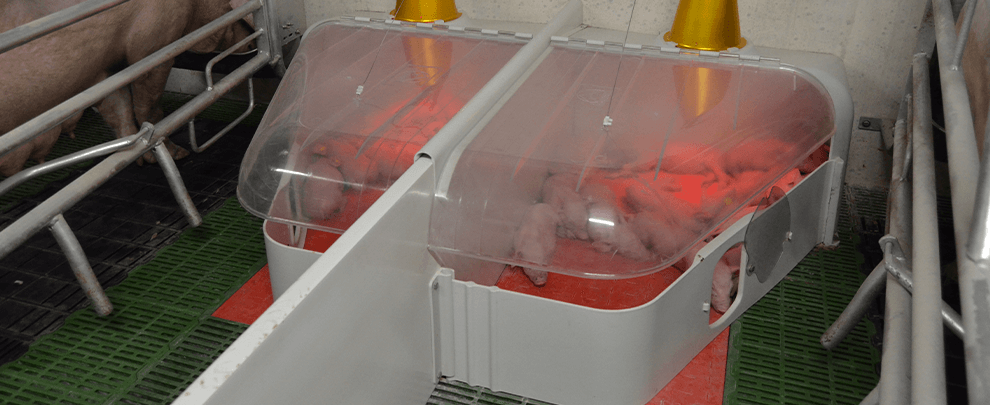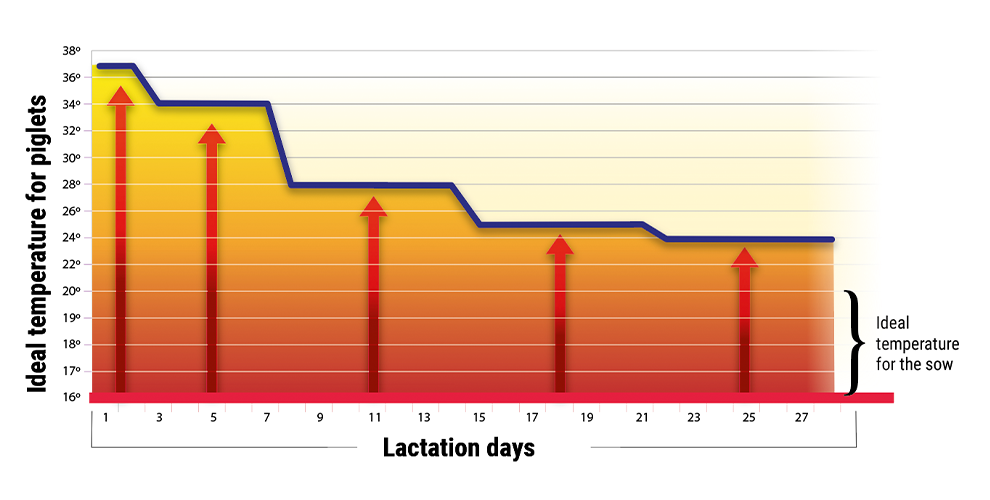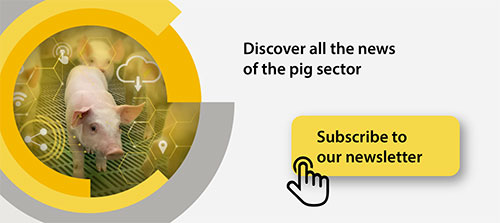Blog
Blog

Benefits of working with nests in farrowing wards
19th November 2019 - Studies
Josep Rius. R+D+I Rotecna Department
Nests are the perfect tool to achieve a higher survival rate and increase the weight of the piglets during weaning. They contribute to creating a protective space for the newborn, with no drafts, and guarantee an optimum temperature for the piglets, as they ensure that the correct temperature is maintained for the sows in the farrowing pens.
It is very important to ensure the correct temperature for the piglet inside the nest during the lactation period, so that all their energy is spent on growing without having to use it to keep warm. The thermoneutral range of the piglet will gradually be reduced as it grows (see graph).

The benefits of working with nests in farrowing pens are increased when it is possible to enclose them with fences. Some practical examples in which this is evident are:
- During birth, when the fence is used to dry and recover the body temperature of the newborn piglets. This task is particularly recommendable in small, weak piglets or piglets who suffer from hypothermia for some reason. Using straw or paper clippings and making use of the high temperature in the nest helps them recover. Once they are dry and warm (after 20-30 minutes) they will be in the best possible physical condition for nursing with all the energy they can muster.
- For split nursing. During birth and particularly in large litters, the use of a fence is the good way to establish split-nursing systems. This guarantees that each piglet receives the right quantity of colostrum.
- To get the piglets accustomed to learning to recognise their area of comfort and refuge and prevent the risk of crushing when the sow gets up or lies down. After nursing, the piglets are locked up for 20-30 minutes (2/3 times a day is usually enough) to help them recognise their nest. This will help the piglets understand that after nursing, they must go to the nest and rest in comfort, with no drafts or chills, thus reducing the number of deaths by crushing and improving the weight of the piglet during weaning.
- To administer specific treatments. The fencing of the nests makes it easy to work with the piglets in cases in which it is necessary to apply preventive or curative substances by means of injections or orally, such as administering iron, treating diarrhoea, vaccinating or controlling the animals, filing their teeth, etc.








